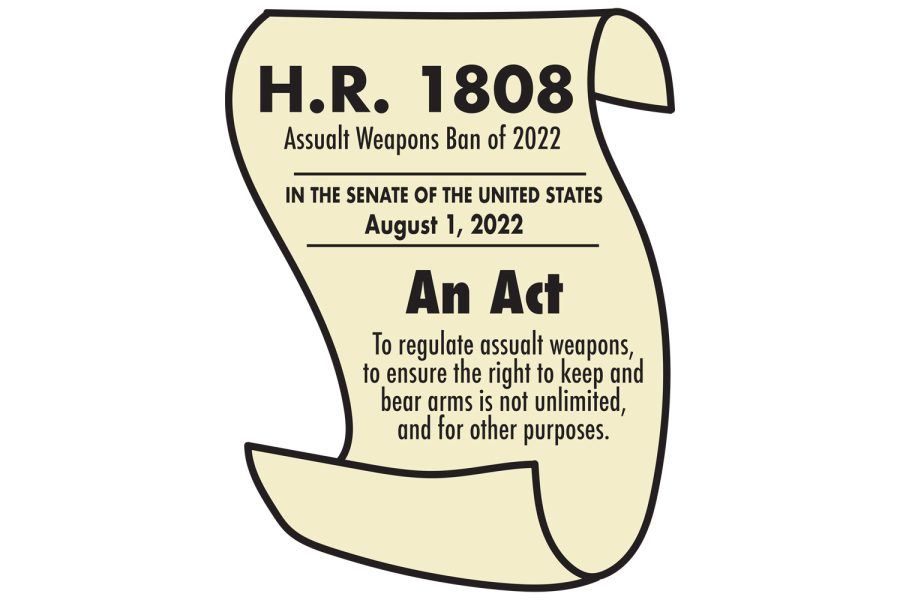Opinion | It’s time to ban semi-automatic assault weapons
Recent mass shootings reaffirm need to ban semi-automatic assault weapons.
November 27, 2022
I was in fifth grade when Adam Lanza shot and killed 20 Sandy Hook Elementary School students and six teachers in Newtown, Connecticut.
That is my first memory of gun violence. Now, almost 10 years later, mass shootings happen on a regular basis. Graphics with the names of gun violence victims pop up on our social media feeds, and mass shootings at schools, shopping centers, or restaurants circulate the evening news.
Since the second amendment to the U.S. constitution was ratified in 1791, the musket has evolved to the AR-15 platform riffle. We need to stop pretending that we’re living in the days of the founding fathers. Firearms have changed with the times, and we must too.
This year will likely be the second deadliest year for gun violence on record in the U.S., according to the Gun Violence Archive Organization. This year, over 35,000 people have been injured, and over 18,000 have died from gun violence. The number of deaths includes over 1,500 individuals under the age of 15.
The U.S. can’t sit tight and wait for states to adopt progressive gun control measures while mass shootings happen on an almost daily basis. The federal government needs to act and ban semi-automatic assault weapons.
In November, Iowa voted to add the right to keep and bear arms to state constitution. The same month, seven people in Chesapeake, Virginia; four people in Hennessey, Oklahoma; five people in Colorado Springs, Colorado; and four people in Richmond, Virginia were killed by gun violence, reports the Gun Violence Archive Organization.
The last time the U.S. imposed a ban on semi-automatic firearms was in 1994. Former President Bill Clinton signed the Public Safety and Recreational Firearms Use Protection Act on Sept. 13, 1994. The ban prohibited the manufacture, transfer, or possession of semiautomatic assault weapons. Clinton’s act expired in 2004.
This past year, the U.S. House of Representatives passed the Assault Weapons Ban of 2022. The bill would attempt to regulate assault weapons and ensure that the right to keep and bear arms is not unlimited. The bill also includes expansive language on what constitutes a semi-automatic assault weapon.
The bill must be passed by the Senate before President Joe Biden can sign it into law.
Sen. Chuck Grassley, R-Iowa, voted against the 1994 Act. In June, he voted against the bipartisan Safer Communities Act and will most likely vote against any attempt to ban semi-automatic weapons.
Unlike Grassley, Sen. Joni Ernst, R-Iowa, voted for the Safer Communities Act and has voiced more willingness to negotiate with Democrats on laws to safeguard communities. As a firm defender of second amendment rights, it seems unlikely that Ernst would support a ban on semi-automatic weapons.
It’s true; bans on semi-automatic assault weapons will not end all gun violence in the U.S. Yes, this law would have endless legal battles in state courts, especially in Iowa. But gun violence is an issue, and banning semi-automatic assault weapons is one solution.
The next mass shooting could be on the University of Iowa campus or in the Iowa City Community School District. We need to do everything in our power to protect our communities, even if that means giving up some of our rights.
I urge you to voice support for the Assault Weapons Ban of 2022 and call on our senators to support this act.
Columns reflect the opinions of the authors and are not necessarily those of the Editorial Board, The Daily Iowan, or other organizations in which the author may be involved.















